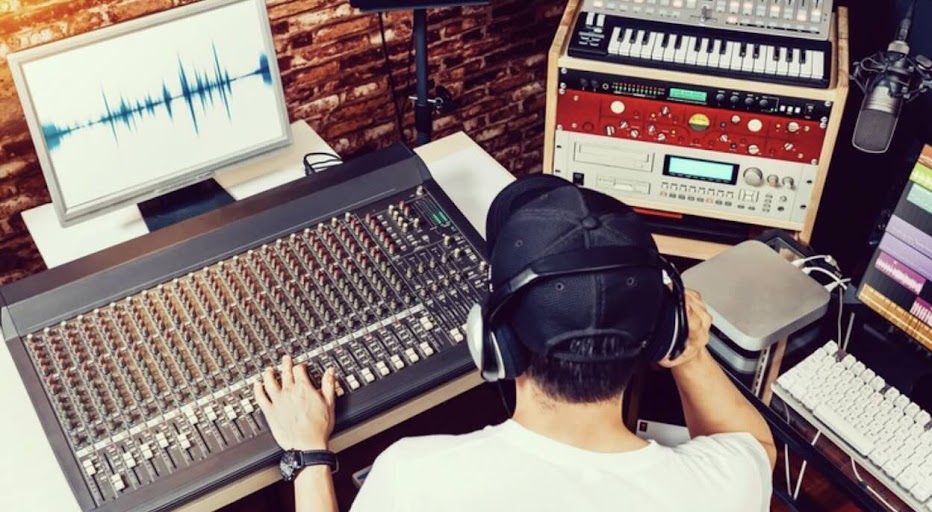What is Digital Audio?
Nowadays it's very common to find the word digital everywhere. The "digital revolution" is reaching every part of our lives: information, video, audio, images, money, etc. In the world of audio, there is a constant debate between digital and analog audio about which one is best. Each one has pros and cons and we actually need both of them when producing music. This time I am going to explain what digital audio is and why it's important.First we have to understand that most audio signals begin as analog signals. For example, the electrical signal coming out of a microphone, guitar, synthesizer or MP3 player is an analog signal. This means that it's a voltage that varies with time. This is why we can represent it as a waveform.
 |
| Fig. 1. Sinusoidal waveform. |
The amplitude changes (Y axis) represent voltage variations. X axis represents time. In the image we see that the voltage goes up and down as time goes by. The amount of variation will depend on the kind of sound that this signal represents. Thus, the waveform will be different if it's a high pitched sound, a voice, a drum, etc.
A digital signal, on the other hand, is a series of pulses. Usually, these are electric pulses, although there is technology that handles pulses of light instead (photonics). These pulses represent coded information and they can have two values only: 0 or 1. So we use a binary system to represent the coded information. Each one of these binary values or digits are called bits (binary digit). For example, in the image we see a two-bit signal, in this case we use 2 bits to represent different amplitude levels.
 |
| Fig. 2. Digital signal |
This chain of bits only makes sense if we know how they are coded, so we can decode it later and extract the information. The most common coding system used for audio is called Pulse Code Modulation (PCM). This is the kind of modulation used for WAV or AIFF files, although there are other kinds of less common modulations.
100% digital?
Loudspeakers need an analog signal to work. This happens because its cone movement is proportional (is analog) to the electric variations of the signal. This means that any digital signal needs to be decoded and converted into an analog signal before reaching the loudspeaker. It also means that there are not a 100% digital audio systems. Likewise, we cannot simply asume that a digital system is better than an analog one.Both kinds of systems have its pros and cons, depending on the application, goals and budget. A basic audio system can be digital on the recording, processing (editing, mixing, effects) and transmission stages but it has to be analog on the power amplifying stage (the signal going to the loudspeakers). Anyway, it's very probable that with technology development, we will have more audio stages on the digital domain.
Digital Signal Processing (DSP)
We could say that digital audio is just a bunch of numbers. That's why one of its main advantages is the use of Digital Signal Processing (DSP). This process consist on a series of complex calculations that can modify the original signal in several ways. This is what happens inside our computers or smartphones when we edit video or images too. Modern computers and devices give us the opportunity to achieve things not possible with analog audio. DSP applications are vast in many fields. In the case of audio, through DSP we can:- Modify the pitch or duration of a sound or tune a singer automatically (sound familiar?)
- Create different effects like reverb, echo, chorus, etc.
- Process the audio with filters, EQ, compressors, etc.
- Reduce background noise or restore old recordings
- Analyze the components of an audio signal, its frequency, phase, amplitud, etc.
- Recognize patterns (voice and music)
- Many more things yet to come!
 |
| Fig. 3. Analyzer using DSP. |
Digital audio is and will be part of our daily life, not only for the audio professional but for everyone. Its advantages for storage, transmission and its impressive processing potential make it a must for any music producer or sound engineer.







0 comments:
Publicar un comentario